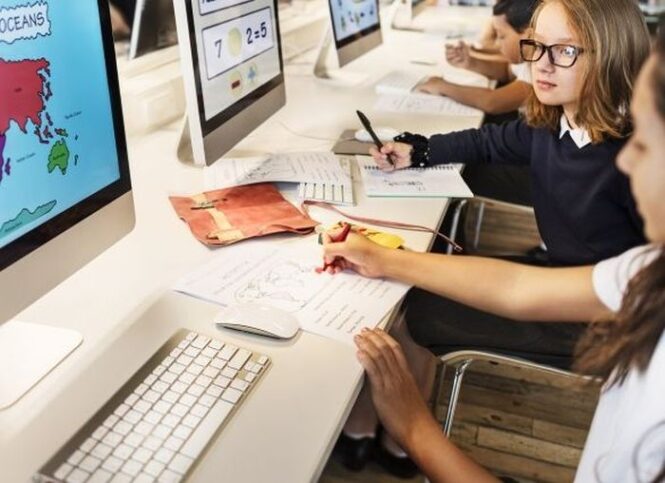What does it take to thrive in this fourth industrial revolution where technology is all over the place? What kind of skills and knowledge must one have to be successful in a technology-saturated workforce? Will we need to know how to use a computer better than how to have face-to-face interactions with other people?
Let’s be honest, everything about our world has changed over the last decade, making a switch from traditional to modern times. And, make no mistake, we aren’t just talking about innovative mindsets but also about how technology can be found absolutely everywhere from our jobs to our homes and personal lives. For example, students can now use websites as customwritings.com for help in writing academic papers.
And, despite all the conspiracies about how robots and artificial intelligence will steal our jobs, there are many studies that show that the human workforce is here to stay for a long time now. Why is that so? Because automation actually tends to create more jobs than it destroys. The human workforce becomes indispensable in monitoring, decision making, interpreting, and delivering insight and service to customers. So, what’s changed isn’t the fact that we have been replaced by robots, or will be in the past, but rather that we now have to learn how to work side by side with them.
According to research from the World Economic Forum, 90% of organizations claim that they are currently dealing with a shortage of IT skills. Moreover, 75% of students and educators claim that they feel there is a gap in their ability to meet the demand for IT skills needed in today’s modern offices. That being said, education had to evolve together with technology in order to be able to deliver skilled workers for the modern workplaces.
So, how do we teach today’s students to thrive in tomorrow’s technology-saturated workforce?
New technology is reshaping education

First things first, we need to note that technology didn’t just reshape the modern office. It also reshaped the modern classrooms. From e-books to projectors, laptops, tablets, and smartphones, countless devices are used in the classroom to enhance the learning experience these days.
Innovative technologies like AI, machine learning, or educational software aren’t just changing the learning game for students. It also challenges educators to find a way to fit in the modern classroom and the learning needs of their digital native students.
From allowing a more tailored learning experience for each student to increasing knowledge retention among students, educational technologies are remodeling the traditional classrooms and lessons.

Also, in today’s data-obsessed world, technology has also changed the way educators can track the evolution of their students in the classroom. They can now get insight into how students are struggling with certain subjects leading to innovative ideas on how to help them learn more easily.
Another trend, facilitated by technology that is gaining momentum, is online learning. Let’s be honest, studying at your own pace, in your own comfort, and whenever your schedule allows it is much more attractive than attending classes. Online learning is a major trend and has a number of advantages including flexibility, lower costs, and comfort.
Moreover, online learning isn’t popular just among students but also among professionals aspiring towards career advancement. It also offers more choice of course topics by allowing students to connect with professional educators from all around the world. Say, for example, that you want to take online chemistry classes to improve your academic performance or for career advancement. Information is just a Google search away and for more details you can check Chemistry Guru.
Today’s students and tomorrow’s workforce

Remember when we were little and our parents used to ask us what we want to become when we grow old? Most of us gave answers like doctor, nurse, pilot, you name it. Yet, it seems that for today’s kids it’s not going to be so easy to pick a profession as it was for us. According to the same study from the World Economic Forum, it is estimated that 65% of today’s children that are entering primary school will work in professions that don’t even exist today.
So, needless to say, we live in a fast-changing world. So how do we prepare students to thrive in a fast-changing world? The answer: we teach them how to learn.
Thanks to the Internet, the answer to any question is just a Google search away these days, right? Whether you want to calculate a math problem or find the capital of any country around the globe, all you have to do is to ask the web search engine and find the answer within minutes. So, information is all over the place, you just need how to learn.
Compared to traditional teaching methods, when educators were teaching students practical skills that they were able to apply as soon as they were joining the workforce, today, it simply makes more sense to place a higher value on teaching them how to adapt.

From teaching students how to adapt to changing technologies or trends in the future workplace to teaching them how to learn on their own and develop their decision-making skills, these are the strategies that will truly prepare them for a fast-evolving world.
Next, since we have mentioned that our kids will be working in a technology-saturated workforce, again, it simply makes sense to teach them how to use technology. So, the more technology is integrated into the classroom, the easier it will be for the future employees to use innovative technologies in their work.
Technology, robots, AI, machine learning, you name it, they are all gaining momentum in the modern workplace. Yet, there’s one crucial skill that even future workers will need to excel at: communication skills. As mentioned above, human workers, especially in the customer support and service landscape, will still be essential. Why? Because, so far, no robot can interact and engage with a customer as well as human employees do. So, communication skills both for face-to-face interactions and for digital communication remain relevant and important for us to teach today’s students.
Technology can be an incredible asset and benefit us all both in the classroom and in the workplace. Yet, it is important to make sure that we prepare our students properly to thrive in the future technology-saturated workforce.
 Imagup General Magazine 2024
Imagup General Magazine 2024



